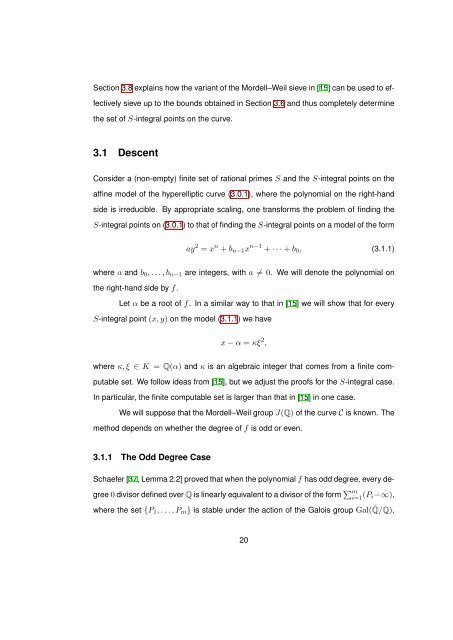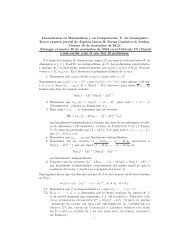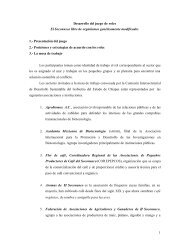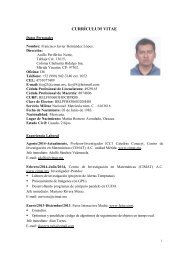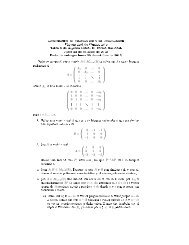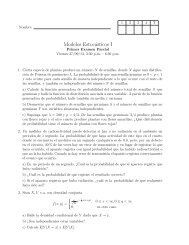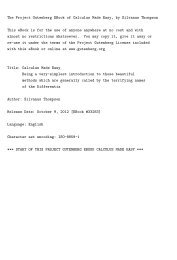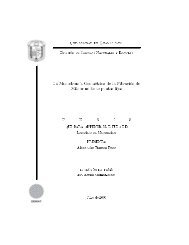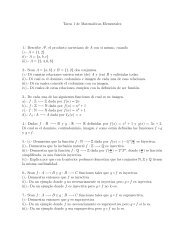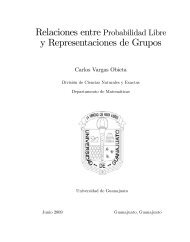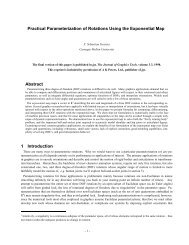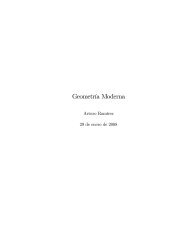S-integral points on hyperelliptic curves Homero Renato Gallegos ...
S-integral points on hyperelliptic curves Homero Renato Gallegos ...
S-integral points on hyperelliptic curves Homero Renato Gallegos ...
- No tags were found...
You also want an ePaper? Increase the reach of your titles
YUMPU automatically turns print PDFs into web optimized ePapers that Google loves.
Secti<strong>on</strong> 3.8 explains how the variant of the Mordell–Weil sieve in [15] can be used to effectivelysieve up to the bounds obtained in Secti<strong>on</strong> 3.6 and thus completely determinethe set of S-<str<strong>on</strong>g>integral</str<strong>on</strong>g> <str<strong>on</strong>g>points</str<strong>on</strong>g> <strong>on</strong> the curve.3.1 DescentC<strong>on</strong>sider a (n<strong>on</strong>-empty) finite set of rati<strong>on</strong>al primes S and the S-<str<strong>on</strong>g>integral</str<strong>on</strong>g> <str<strong>on</strong>g>points</str<strong>on</strong>g> <strong>on</strong> theaffine model of the <strong>hyperelliptic</strong> curve (3.0.1), where the polynomial <strong>on</strong> the right-handside is irreducible. By appropriate scaling, <strong>on</strong>e transforms the problem of finding theS-<str<strong>on</strong>g>integral</str<strong>on</strong>g> <str<strong>on</strong>g>points</str<strong>on</strong>g> <strong>on</strong> (3.0.1) to that of finding the S-<str<strong>on</strong>g>integral</str<strong>on</strong>g> <str<strong>on</strong>g>points</str<strong>on</strong>g> <strong>on</strong> a model of the formay 2 = x n + b n−1 x n−1 + · · · + b 0 , (3.1.1)where a and b 0 , . . . , b n−1 are integers, with a ≠ 0. We will denote the polynomial <strong>on</strong>the right-hand side by f.Let α be a root of f. In a similar way to that in [15] we will show that for everyS-<str<strong>on</strong>g>integral</str<strong>on</strong>g> point (x, y) <strong>on</strong> the model (3.1.1) we havex − α = κξ 2 ,where κ, ξ ∈ K = Q(α) and κ is an algebraic integer that comes from a finite computableset. We follow ideas from [15], but we adjust the proofs for the S-<str<strong>on</strong>g>integral</str<strong>on</strong>g> case.In particular, the finite computable set is larger than that in [15] in <strong>on</strong>e case.We will suppose that the Mordell–Weil group J(Q) of the curve C is known. Themethod depends <strong>on</strong> whether the degree of f is odd or even.3.1.1 The Odd Degree CaseSchaefer [37, Lemma 2.2] proved that when the polynomial f has odd degree, every degree0 divisor defined over Q is linearly equivalent to a divisor of the form ∑ mi=1 (P i−∞),where the set {P 1 , . . . , P m } is stable under the acti<strong>on</strong> of the Galois group Gal( ¯Q/Q),20


